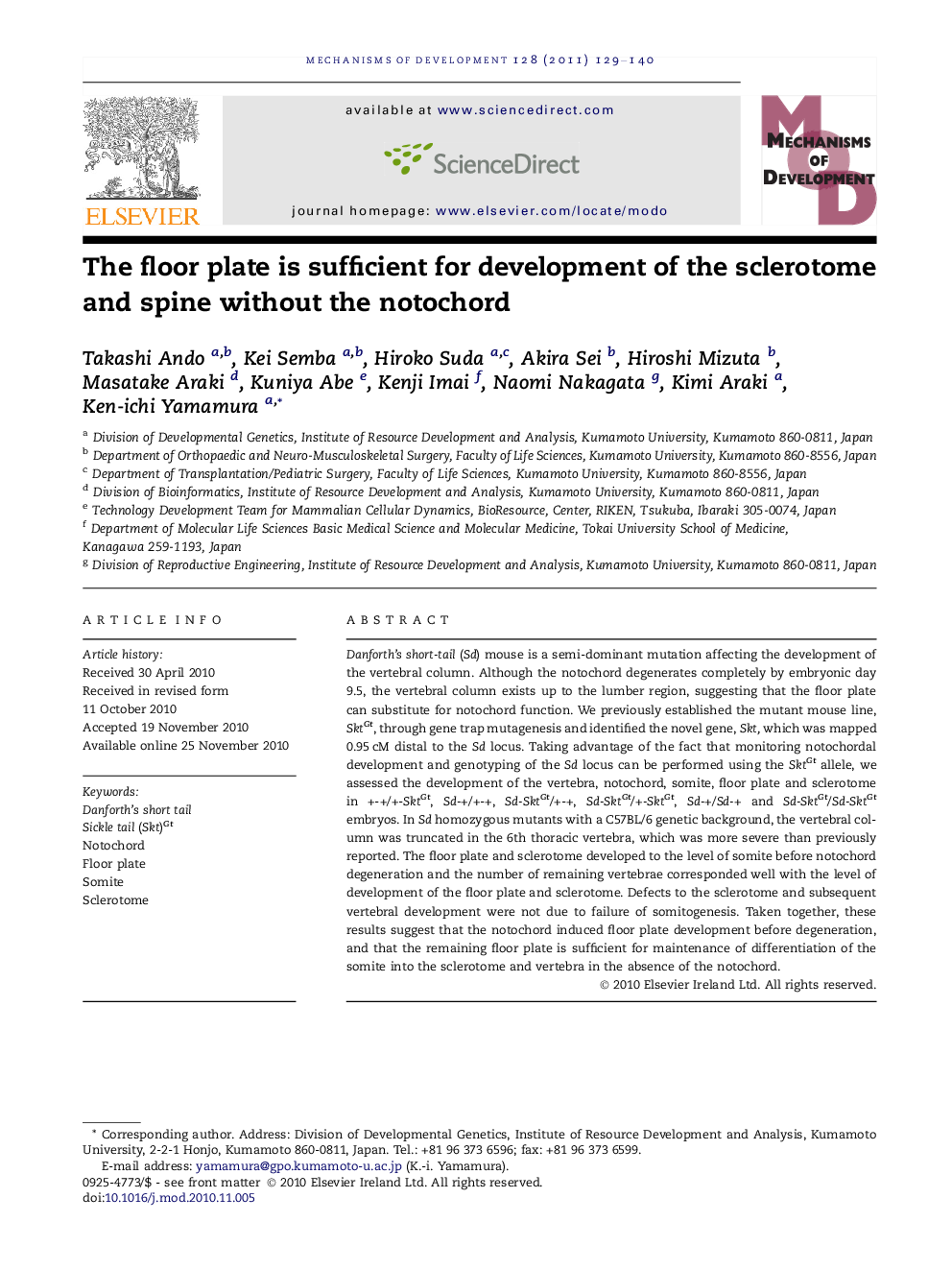| Article ID | Journal | Published Year | Pages | File Type |
|---|---|---|---|---|
| 2194939 | Mechanisms of Development | 2011 | 12 Pages |
Danforth’sshort-tail (Sd) mouse is a semi-dominant mutation affecting the development of the vertebral column. Although the notochord degenerates completely by embryonic day 9.5, the vertebral column exists up to the lumber region, suggesting that the floor plate can substitute for notochord function. We previously established the mutant mouse line, SktGt, through gene trap mutagenesis and identified the novel gene, Skt, which was mapped 0.95 cM distal to the Sd locus. Taking advantage of the fact that monitoring notochordal development and genotyping of the Sd locus can be performed using the SktGt allele, we assessed the development of the vertebra, notochord, somite, floor plate and sclerotome in +-+/+-SktGt, Sd-+/+-+, Sd-SktGt/+-+, Sd-SktGt/+-SktGt, Sd-+/Sd-+ and Sd-SktGt/Sd-SktGt embryos. In Sd homozygous mutants with a C57BL/6 genetic background, the vertebral column was truncated in the 6th thoracic vertebra, which was more severe than previously reported. The floor plate and sclerotome developed to the level of somite before notochord degeneration and the number of remaining vertebrae corresponded well with the level of development of the floor plate and sclerotome. Defects to the sclerotome and subsequent vertebral development were not due to failure of somitogenesis. Taken together, these results suggest that the notochord induced floor plate development before degeneration, and that the remaining floor plate is sufficient for maintenance of differentiation of the somite into the sclerotome and vertebra in the absence of the notochord.
